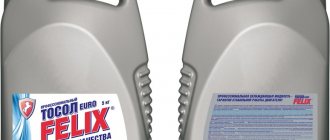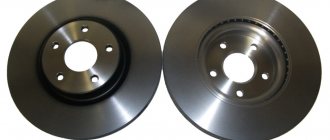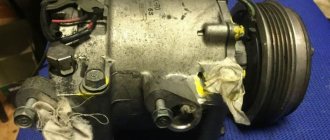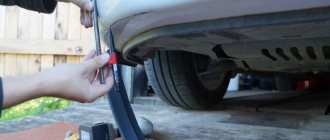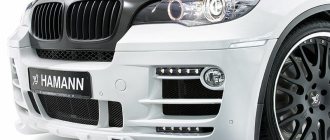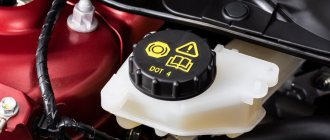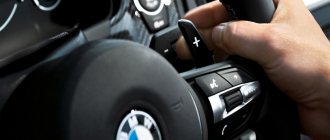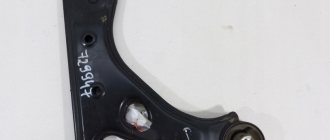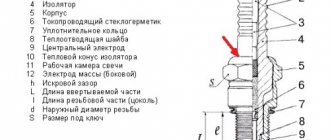Reliable operation of the brake system is of course important for driving safety, therefore special requirements are placed on the quality and suitability of the brake fluid. But even if it is of high quality and chosen correctly, over time its properties will soon deteriorate during operation, so it is imperative to follow the correct replacement intervals provided by the manufacturer.
When you press the brake pedal, the force is transmitted hydraulically to the wheel brakes, which slow down the vehicle due to friction forces. If this happens, the brake fluid may heat up above the permissible limit, boil and vapor locks may form. The mixture of liquid and vapor will be compressed, so the brake pedal may “fail” and braking will be unreliable, and failures may occur. To eliminate this phenomenon, hydraulic drives use special fluids for hydraulic drives of the brake system. They are classified by boiling point and viscosity according to DOT (Department of Transportation) standards adopted by the US Department of Transportation. This takes into account the boiling point of a liquid without moisture impurities (dry), and containing up to 3.5% water. Viscosity - two indicators at temperatures +100°C and –40°C. Similar requirements are imposed by other international and national standards - ISO 4925, SAE J1703 and others. In Russia, there is no single standard regulating the quality indicators of brake fluids, so manufacturers work according to their own technical conditions.
What is the composition of brake fluids?
The usual composition is a mixture of a low-viscosity solvent (for example, alcohol) and a viscous, non-volatile substance (for example, glycerin). DOT 3, DOT 4 and DOT 5.1 are made from polyethylene glycol. DOT 5 is made on the basis of silicone – silicon-organic polymer products. DOT 5.1/ABS – a silicone base with the addition of glycols, especially for cars with an anti-lock braking system (ABS). DOT 3, DOT 4 and DOT 5.1 are hygroscopic and absorb moisture from the environment at a rate of about 2-3% per year, while their characteristics vary greatly.
Water absorption worsens the performance qualities of the liquid and sharply reduces the boiling point; at 3.5% water content, the temperature drops from 260 to 140-150 ° C (this is one of the reasons requiring regular replacement of fuel fluid), in addition, water causes corrosion, for example, Scale forms on the seals, the brake cylinder begins to leak, and it is absorbed so strongly that it is almost impossible to remove.
DOT 5 is a hydrophobic liquid, meaning it does not absorb moisture from the atmosphere, so its service intervals are two to three times longer.
Some manufacturers allow the use of specially designed mineral fluids for specific brake systems on their cars. Mineral fuel oils are usually produced on the basis of castor oil with the addition of butyl or ethyl alcohol. They have excellent lubricating properties and low hygroscopicity, but their boiling point is too low, and they freeze already at a temperature of -20°. In addition, the “mineral water” gradually destroys parts made of copper, brass, aluminum and rubber cuffs of the hydraulic drive. Unlike DOT, mineral oil-based brake fluids are not subject to certification; rather, they are “cocktails” from different manufacturers who keep their components secret.
Does the liquid change during operation?
Many drivers are in no hurry to change the brake fluid (BF) in their car due to the established opinion that it does not change its properties. This statement is erroneous, since the brake circuit is considered to be closed conditionally. The system is equipped with compensation holes that allow air in and out when the brake pedal is operated.
During operation, TJ inevitably absorbs moisture from the air, inevitably changing its composition. One of the undesirable properties of TJ manifests itself - hygroscopicity. The fluid needs to be changed.
Operating requirements
Brake fluids must meet the requirements for viscosity, boiling point, absence of negative effects on rubber products, protection against metal corrosion, lubrication of rubbing pairs and stability during temperature variations.
Rubber seals and cuffs are installed in the brake hydraulic drives. If, when exposed to brake fluid, the rubber increases in volume, the tightness of the connection increases. A ten percent expansion is allowed for imported materials. During operation, rubber products should not lose strength and elasticity, decrease in size or swell.
Hydraulic brake parts are made of metals of different densities. They are connected to each other, resulting in electrochemical corrosion. To prevent this from happening, inhibitors are introduced into the brake fluid, which protect copper, brass, aluminum and steel parts.
The way brake fluid lubricates the working surfaces of cylinders, pistons and rubber products will directly affect their wear.
At temperatures from minus forty to plus one hundred degrees Celsius, brake fluid must retain its properties, prevent the formation of deposits, and not promote separation and oxidation.
What is the best liquid to choose?
When choosing a fluid for your car, you should first take into account the recommendations of the car manufacturer. For each car model of a certain brand, the manufacturer sets the appropriate type of engine and transmission oil, and also recommends the most suitable brake fluid for use. That’s why you can’t go into a store and buy the first type of brake fluid you come across, even if it is actively advertised on television and in the press, and is also praised by sellers. When purchasing brake fluid, be sure to read the instructions on the package.
The best data contains a vehicle with a DOT 4 class 6 badge. Many automakers especially recommend the Castrol or Mobil brand and their advice cannot be ignored. Of course, you can try and save on your purchase, but we must not forget that high-quality brake fluid can work effectively in the most unforeseen situations, and in addition, it will greatly extend the life of the car’s braking system.
Is it possible to mix brake fluids?
Remember, when purchasing a certain brand, it is not recommended to mix it with other brands, even if the class and manufacturer are the same. This mixing results in an uncontrollable chemical reaction that can destroy the elements of the hydraulic system.
DOT Specification
According to DOT 4, brake fluids are divided into 5 classes: DOT 3, DOT 4, DOT 5, DOT 5.1, DOT 5.1/ABS.
The DOT 4.5 and DOT 4+ products found on the market are not related to the American standard. This is the same “four” with additional additives that improve some characteristics.
In 2005, the International Organization for Standardization (ISO) released an edition of the ISO 4925 standard. It included an additional class - DOT 4 CLASS 6, intended for braking systems with ABS and additional functions ESP, ESC, TCS, etc. d.
In such systems, the most important parameter is viscosity at negative temperatures - it should not exceed 750 mm2/s.
Important Features
The main component of liquids is glycol or silicone. 2-5% are additives that improve performance. Modifiers and inhibitors prevent oxidation and corrosion, swelling of rubber seals.
Compliance with a particular class is determined by the following parameters:
- The boiling point of the “dry” liquid;
- Boiling threshold “moistened” (water content about 3.5%);
- Kinematic viscosity at a temperature of -40.
Additionally, the activity of hydrogen ions (pH) is assessed. The value of this parameter should be between 7 and 11.5 units. If the pH of the liquid is less than 7, it will cause corrosion of steel; if the pH is above 12, it will cause corrosion of non-ferrous metals.
Boiling temperature
Why is boiling point so important? During the boiling process, bubbles are formed, which, unlike liquids, are compressible. If there is a large amount of air, the force from the pedal will not be enough to transfer it to the cylinders.
Viscosity
The lower the ambient temperature, the more viscous the fluid becomes, resulting in slower braking. The viscosity of DOT-4 cannot exceed 1800 mm2/s at a temperature of -40C.
Basic properties of brake fluids.
Boiling temperature. The higher it is, the less likely it is that a vapor lock will form in the system. When the car brakes, the working cylinders and the fluid in them heat up. If the temperature exceeds the permissible temperature, the fuel oil will boil and steam bubbles will form. The incompressible fluid will become “soft”, the pedal will “fail”, and the car will not stop in time. The faster the car was going, the more heat would be generated when braking. And the more intense the deceleration, the less time will be left for cooling the wheel cylinders and supply pipes. This is typical for frequent long-term braking, for example in mountainous areas and even on a flat highway loaded with traffic, with a sharp “sporty” driving style. The sudden boiling of a fuel tank is insidious in that the driver cannot predict this moment.
Viscosity characterizes the ability of a liquid to be pumped through a system. The temperature of the environment and the fuel oil itself can range from minus 40°C in winter in an unheated garage (or on the street) to 100°C in summer in the engine compartment (in the master cylinder and its reservoir), and even up to 200°C with intensive deceleration of the car ( in working cylinders). Under these conditions, the change in fluid viscosity must correspond to the flow sections and clearances in the parts and components of the hydraulic system specified by the vehicle developers. A frozen (all or in some places) fuel fluid can block the operation of the system, while a thick fluid will have difficulty pumping through it, increasing the time it takes for the brakes to operate. And too liquid increases the likelihood of leaks.
Impact on rubber parts. Seals should not swell in the liquid fluid, reduce their size (shrink), or lose elasticity and strength more than is acceptable. Swollen cuffs make it difficult for the pistons to move back in the cylinders, so the car may slow down. With shrinking seals, the system will be leaky due to leaks, and deceleration will be ineffective (when you press the pedal, fluid flows inside the master cylinder, not transferring force to the brake pads).
Impact on metals. Parts made of steel, cast iron and aluminum should not corrode in the TJ. Otherwise, the pistons will “sour” or the cuffs working on the damaged surface will quickly wear out, and the liquid will leak out of the cylinders or will be pumped inside them. In any case, the hydraulic drive stops working.
Lubricating properties. In order for the cylinders, pistons and cuffs of the system to wear out less, the brake fluid must lubricate their working surfaces. Scratches on the cylinder mirrors provoke fuel fluid leaks.
Stability - resistance to high temperatures and oxidation by atmospheric oxygen, which occurs faster in a heated liquid. TF oxidation products corrode metals.
Hygroscopicity is the tendency of polyglycol-based brake fluids to absorb water from the atmosphere.
In operation - mainly through the compensation hole in the tank lid. Brake fluid has one unpleasant property: it absorbs moisture. Due to constant temperature changes, condensation forms and accumulates in it. The more water is dissolved in the fluid, the sooner it boils, the more it thickens at low temperatures, the worse it lubricates parts, and the metals in it corrode faster. The presence of only 2-3 percent water in brake fluid reduces its boiling point by about 70 degrees. In practice, this means that when braking, DOT-4, for example, will boil without warming up to 160 degrees, while in a “dry” (that is, without moisture) state this will happen at 230 degrees. The consequences will be the same as if air gets into the brake system: the pedal becomes a stake, the braking force is sharply weakened.
Purpose of brake fluid and requirements for it
The purpose is clear from the name - to serve as the working fluid of the hydraulic brake drive and ensure their reliable operation in a wide range of temperatures and any operating conditions.
According to the laws of physics, any friction ultimately turns into heat.
Brake pads, heating up when rubbing against the surface of the disc (drum), heat the parts surrounding them, including the working cylinders and their contents. If the brake fluid boils, its vapors will squeeze out the cuffs and rings, and the sharply increased pressure will throw the fluid out of the system. The pedal under your right foot will sink to the floor, and there may not be enough time for the second “pitch.”
Another option is that in severe frost, the viscosity can increase so much that even a vacuum booster will not help the pedal push through the thickened brake fluid.
In addition, the TJ must meet the following conditions:
- Have a high boiling point.
- Maintain the ability to pump at low temperatures.
- Possess low hygroscopicity, i.e. ability to absorb moisture from the air.
- Have lubricating properties to prevent mechanical wear of the surfaces of the pistons and cylinders of the system.
The design of the pipelines of a modern brake system eliminates the use of any gaskets or seals. Brake hoses, cuffs and rings are made of special synthetic materials that are resistant to the grades of brake fluid specified by the manufacturer.
Attention! The sealing materials are not oil and petrol resistant, therefore it is prohibited to use gasoline or any solvents to flush brake systems or their individual elements. To do this, use only clean brake fluid.
Features of the operation of brake fluids
Absorption of water from the atmosphere is characteristic of polyglycol-based fuel fluids. At the same time, their boiling point decreases. FM VSS normalizes it for “dry” liquids that have not yet absorbed moisture, and moistened liquids containing 3.5% water - i.e. limits only the limit values. The intensity of the absorption process is not regulated. TJ can be saturated with moisture at first actively, and then more slowly. Or vice versa. But even if the boiling point values of “dry” liquids of different classes are made close, for example to DOT 5, when they are moistened, this parameter will return to the level characteristic of each class. The fuel fluid needs to be replaced periodically, without waiting until its condition approaches a dangerous limit. The service life of the fluid is determined by the car factory, having checked its characteristics in relation to the features of the hydraulic systems of their cars.
What can and cannot be filled in
Now I would like to answer the reader - let's look at ordinary water. Why it ABSOLUTELY CANNOT BE FILLED. YES, actually everything is simple - even if you don’t dig deep, water boils and evaporates at high temperatures, and at low temperatures it freezes at -1 degree. Come in this winter, start the car, drive off , but there are no brakes! The system is frozen! Also imagine - the system boils when braking, steam pours out of the system reservoir, efficiency is zero. However, even if we hypothetically defeat freezing and boiling, then water has ONE BIG DISADVANTAGE - it oxidizes and provokes rust, after a short period of time, the pistons in the calipers will simply rust, the oil seals, which are designed to run on a smooth and clean surface, will tear and water will leak out.
Alcohols (in their pure form) are also not suitable, because they boil and even ignite.
Transmission oils, motor oils, ATF fluids - oils may be suitable, but again, not all.
Their evaporation is really low, and they also have excellent resistance to high temperatures (especially engine ones), but at low temperatures they can thicken (this negatively affects fluidity), and they can also negatively affect the rubber of the seals! That is, calipers or cylinders may leak.
Checking the fluid condition
It is possible to objectively determine the main parameters of fuel fluid only in the laboratory. In operation - only indirectly and not all. The liquid is checked visually by its appearance. It should be transparent, homogeneous, without sediment. In addition, in car repair shops (mostly large, well-equipped ones that service foreign cars), its boiling point is assessed with special indicators. Since the fluid does not circulate in the system, its properties may be different in the tank (check point) and in the wheel cylinders. In the reservoir it comes into contact with the atmosphere, picking up moisture, but in the brake mechanisms it does not. But there the liquid often gets very hot, and its stability deteriorates. However, even such indicative checks should not be neglected; there are no other operational methods of control.
Do-it-yourself methods for replacing brake fluid
1. Open all air vents from the hydraulic drives. Drain all old fluid. Fill the reservoir with new brake fluid and press the brake pedal. As soon as liquid flows from the fittings, close them. Bleed the brakes, removing air from all circuits. You can let the new fluid that comes out of the fittings settle and then use it again in the brake system. 2. Pump each circuit sequentially, adding new fluid to the brake reservoir. No air enters the system. Some of the old fluid still remains inside the hydraulic drive. With this method of replacing brake fluid, a larger volume will be needed, because the old and new fluid are mixed and its reuse is not permissible.
Compatibility and replacement
TFs with different bases are incompatible with each other, they separate, and sometimes sediment appears. The parameters of this mixture will be lower than those of any of the original liquids, and its effect on rubber parts is unpredictable. The manufacturer usually indicates the basis of the TJ on the packaging. Russian RosDOT, Neva, Tom, as well as other domestic and imported polyglycol liquids DOT 3, DOT 4 and DOT 5.1, can be mixed in any proportions. TJ of class DOT 5 are based on silicone and are incompatible with others. Therefore, the FM VSS 116 standard requires that “silicone” liquids be painted dark red. The remaining modern TJs are usually yellow (shades from light yellow to light brown). For additional testing, you can mix the liquids in a 1:1 ratio in a glass container. If the mixture is clear and there is no sediment, the TJs are compatible. It should be remembered that mixing liquids of different classes and manufacturers is not recommended, as their properties may change. It is forbidden to mix glycol fluids with castor fluids. Adding fresh fluid when pumping the system after repair does not restore the properties of the fuel fluid, since almost half of it remains practically unchanged. Therefore, within the time limits established by the car plant, the fluid in the hydraulic system must be completely replaced.
What are the features of glycol-based fluids?
- half the compression even when heated, which leads to higher system performance and enhances the feel of the brake pedal; — water content increases viscosity at low temperatures and enhances corrosion activity; — corrode paint and irritate the skin; — shelf life is very limited due to hygroscopic properties and usually does not exceed 12 months. after opening the container; — fully compatible with each other (3, 4 and 5.1); - Easily washed off and neutralized with water.
DOT 5 - what's the difference?
— this silicone liquid is absolutely incompatible with glycol; — has hydrophobic properties, which increases shelf life (hypothetically up to unlimited in a sealed container and 10-15 years after opening) and operation up to 4-5 years; - since it does not absorb water, any moisture in the system will collect in one place. This may lead to corrosion of the hydraulics. Careful bleeding is necessary to remove all air; — non-aggressive towards paint and varnish coatings; — has high operating temperatures with an initial boiling point of +260°C, intended for use in systems with heavy loads or in extreme conditions, for fast, aggressive driving with frequent and sharp braking. Mainly for cars with complex and multi-support brake systems; — a little compression and gives a barely noticeable feeling of a “soft pedal”; — prohibited for use in cars with anti-lock braking system (ABS); — friendly with any rubber parts (complaints that DOT 5 leads to failure of the rubber parts of the brakes were when using early formulas of silicone fluid. The latest compositions have eliminated this problem).
How can you tell by color that brake fluid needs replacing?
There are several signs that, without special instruments, will indicate that the brake fluid is aging and losing its working properties.
- Darkening without loss of transparency. This color change is associated with the development of the base and additives, as well as with moisture saturation. If the liquid has only darkened, but has not lost some transparency, and there are no visible foreign inclusions in its volume, most likely it can still be used. You can find out more precisely only after analysis with a special device: a brake fluid tester, which will determine the percentage of water.
- Loss of transparency and the appearance of fine inclusions and heterogeneous sediments in the volume. This is a clear sign that the brake fluid has reached its limit and will have to be changed. Even if the tester shows that the moisture content is within normal limits, the fluid must be replaced. Otherwise, problems may appear in the system, since dark color and heterogeneous inclusions indicate wear of the additives.
Even if the brake fluid still seems normal in color, but its service life has exceeded 3 years for glycol bases and 5 years for silicone bases, it must be replaced in any case. During this period, even the highest quality options will become saturated with moisture and lose their lubricating and protective properties.
//www.youtube.com/watch?v=2g4Nw7YLxCU
Foreign liquid samples
- Castrol React DOT 4 Low Temp, manufacturer: Castrol. Viscosity and service life are the best. Designed for advanced braking systems found in modern sports cars, as well as family minivans that have special electronic limiters. The best European car manufacturers - BMW, Mersedes Benz and others - use this brand.
- LiquiMoly DOT 4, manufacturer: LiquiMoly. It has the highest boiling point. Thanks to this indicator, the liquid is perfect for cars equipped with ABC. Includes inhibitors and additives that prevent oxidation and corrosion of metal components of the hydraulic brake system.
- Brake Fluid DOT 4, manufacturer: Mobil. It has an optimal viscosity index in conditions of negative temperatures (from -30 and below). Due to the presence of anti-corrosion and lubricating properties, the wear resistance of the hydraulic brake drive is significantly increased.

